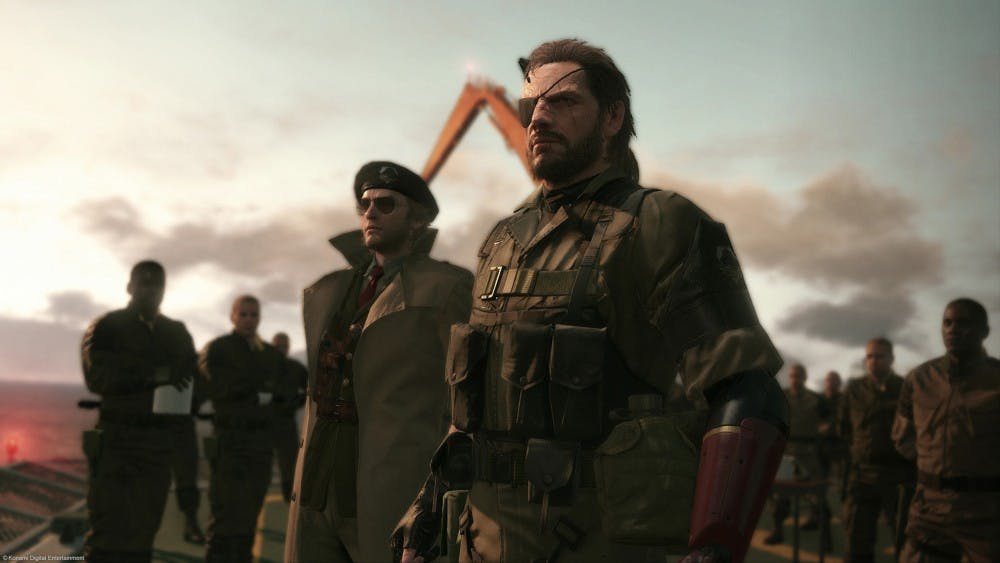What else can be said about the rocky relationship between writer and director Hideo Kojima and Konami, the publisher and owner of the Metal Gear IP? Given the massive amounts of coverage that have been the subject of rampant speculation and rumor, anticipation about what many were expecting to be Kojima’s swan song was high. “Metal Gear Solid V: The Phantom Pain” is through and through a Hideo Kojima game, and it lives up to the high bar set by its predecessors.
Despite the reputation of the Metal Gear franchise for having really long-winded cutscenes full of plot twists and more characters than the average William Faulkner novel, Kojima has decided to pare the hours of audio drama through the Codec to cassette tapes that can be listened to at leisure. Unfortunately, this approach can lead to lack of context at crucial story moments.
Continuing the series’ tradition, “The Phantom Pain” relies primarily on sneaking around to avoid enemy detection while infiltrating an enemy base. The difference in this title is an emphasis on sprawling environments that Big Boss can wander around. These areas are two flash-points of 1984 in northern Afghanistan and at the Angolan-Zaire border. However, unlike earlier entries in the series, sneaking is not mandatory, as the gunplay and the camera controls are as tight as those of “Gears of War,” allowing for dynamic, tense action sequences that don’t immediately result in game overs.
In fact, allowing for this freedom of choice and agency is the central focus of this game. Main story missions are replayable for bonus objectives and extra resources and work similarly to episodes from a TV show. However, missions can irritatingly contain mission spoilers in the pre-credits sequence for each main story mission. The effect would be the same as if Matt Damon had been credited as Dr. Mann at the beginning of “Interstellar”.
Regardless of some gaffes and a number of shocking swerves into the supernatural, the story remains compelling as Big Boss, with the help of Miller and Ocelot, seeks to avenge the wrongdoings by the mysterious Cipher organization, Skull Face and the XOF Unit that served as the antagonist of “Ground Zeroes.”
Running on Konami’s proprietary Fox Engine, the game looks incredible on PlayStation 4 and Xbox One, with gameplay locked at a buttery smooth 60 frames per second. Draw distances are incredibly far, and textures are exquisitely rendered in the sand in Afghanistan and the mud in Angola. PS4 renders the game at a native 1080p resolution, while Xbox One goes for a 900p resolution. In all, it’s a fairly inconsequential difference, but it has to be noted. A sprawling final huzzah for one of the industry’s eminent all-stars and his now defunct team, “Metal Gear Solid V: The Phantom Pain” is the culmination of nearly three decades of game design experience, all of it stellar. It’s pretty good.
Michael Su




